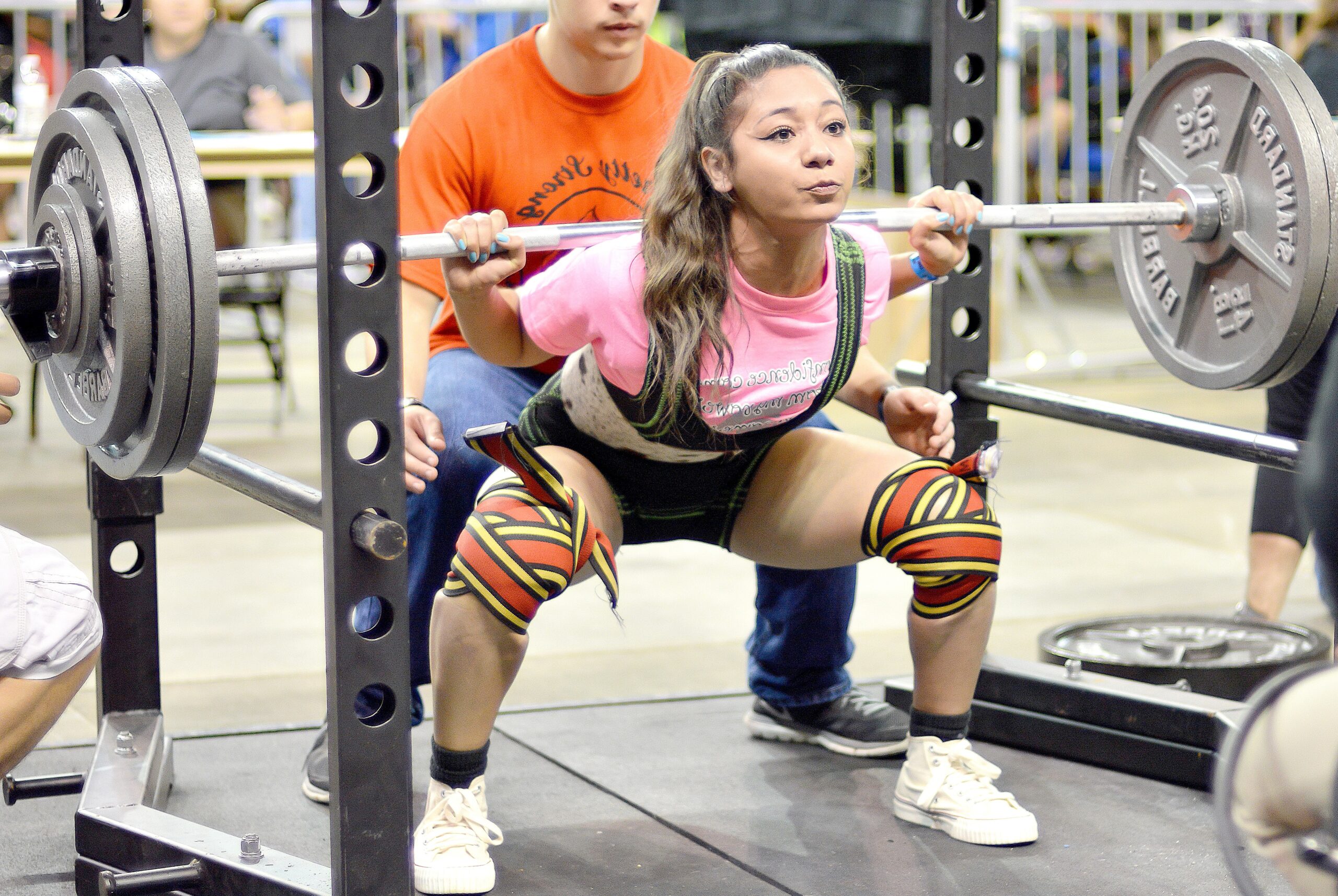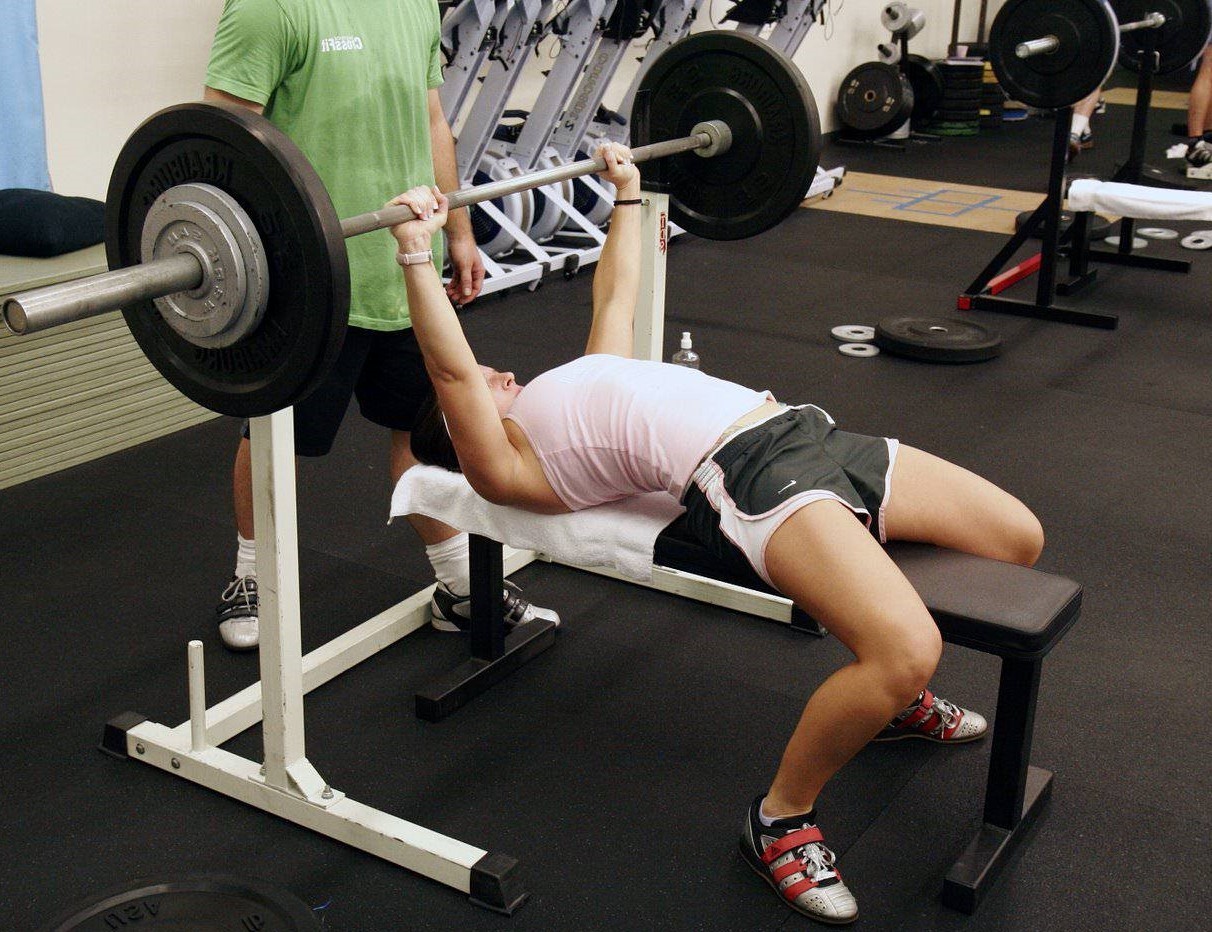When you first start lifting, you’re likely going to be horribly lost in all the information you have to absorb. Unless you’re lucky enough to have the means to afford a coach, chances are that you’re a novice lifter who just picked up a barbell as a way to get in shape, or get stronger, or because something clicked with you when you first started lifting weights and you decided to get serious. You have no concept of programming, and frankly, no reason to care.
I’ve previously written about how consistency matters the most, and how picking your first program is a fairly trivial act of choosing from one of several dozen decent templates that ultimately just get you into the gym to lift on a regular basis and continue to increase your lifts over time. But what about after you’re done being a beginner?
After the Beginner Stage
Most, if not all of these “basic beginner” programs are built around making weekly progress, at times even utilizing an incredibly over-simplified programming like 5×5 or 4×4. That can work for a while, but you’re inevitably going to hit a wall. That’s because powerlifting is a sport where you work to improve two things:
- Your technique and ability to lift a maximal load.
- Your overall muscle mass, specifically your lean mass.
When you’re inexperienced, you can afford to be inefficient. Building strength and muscle mass are two different goals in a sense, but early on, they both amount to the same thing – just do something, and then do more of it later on, preferably increasing your resistance along the way.
Doing 5×5 on squats, deadlifts and bench pressing is going to help you get a hang of the movement, but it won’t teach you how to lift maximal weights. Doing 5×5 also isn’t optimal for muscle growth. Because these programs are also often quite simple and don’t involve coaching, individual weaknesses or unaddressed form problems are eventually going to manifest into plateaus, keeping you from progressing without first making a few changes.
There are a few beginner programs that can basically be used indefinitely, with just a few tweaks. It’s usually better to adjust a program based on how you’re progressing rather than jumping ship to something completely new, unless what you had to begin with was terrible anyway.
So, if you’re a novice powerlifter who wants to start training in a way that’s built more around the sport and the goal of lifting heavier weight, then it’s time to start choosing a program that you can stick with for a long time, or learn about programming for yourself.
Understanding Cycles and Periodization
Periodization in sports training is basically the understanding that an athlete’s training needs to change and adapt over the course of a training period in order to ultimately help an athlete reach their goal. Periodization is usually split between macrocycles, mesocycles, and microcycles.
- Macrocycle: One year, or a training period. For other sports, this might be another length of time. It might even be two years.
- Mesocycle: This is a period of more than a week, usually accomplishing a specific goal. Western periodization in particular follows the idea of focusing on a different goal for each mesocycle, bringing gains from one cycle over into the next.
- Microcycle: A short training period, usually representing the days spent training in a single week. Athletes train as often as 7 days per week, while amateur powerlifters usually train between 3-5 times a week.
The general problem with Western periodization is that the gains made over one mesocycle are partially lost when going into the next mesocycle. To explain, a powerlifter may break up their training to first focus on a base for their training, then working up to improve hypertrophy (muscle growth), before switching over into a strength-based mesocycle, and ending in a pre-competition cycle. Over the course of the strength-based mesocycle, it’s normal to lose some muscle mass as the gains from the previous mesocycle are lost. When the process is repeated, some strength is lost as well.
One Step At a Time
This isn’t tragic, and it’s part of how the whole system works. By focusing on an individual quality at a time, a coach can work to bring the different elements together for competition. An individual powerlifter can use a program like this if they have a specific goal in mind, usually accompanied by an actual date – a meet at which point they need to hit a certain PR, perhaps 110% of their current max, or something along those lines.
Other programs can be used indefinitely, with mesocycles of up three months, and short as three weeks, cycling through the same mesocycle over and over again over the course of a year (macrocycle). For example, take one of the many GZCL templates that utilize the GZCL programming method to help powerlifters improve their lifts. In one template, a 4-week program goes through different rep ranges to prepare a powerlifter for a series of 1+ AMRAP sets during week 4, followed either by a deload or by moving on towards week 1 with an updated estimated max to reflect the progress made of the course of the last month.
 Programs like that are excellent for intermediate lifters who need a program that gives them more time between all-out sets, and more time spent under the bar with varying levels of volume and intensity to help the body recovery while continuing to produce strength results. Someone on an elite level is likely going to use a similar program, with just a few changes, and with unique programming protocols prior to competition (this is what is called a “peaking” program). 5/3/1 is also built on this very premise, and it’s spawned countless other programs, including GZCL, who draw huge inspiration from the work of Jim Wendler.
Programs like that are excellent for intermediate lifters who need a program that gives them more time between all-out sets, and more time spent under the bar with varying levels of volume and intensity to help the body recovery while continuing to produce strength results. Someone on an elite level is likely going to use a similar program, with just a few changes, and with unique programming protocols prior to competition (this is what is called a “peaking” program). 5/3/1 is also built on this very premise, and it’s spawned countless other programs, including GZCL, who draw huge inspiration from the work of Jim Wendler.
Other Programs
Another programming philosophy is the conjugate method, which I have discussed in the past. The basics of the conjugate method is that you have four training days with several optional training days added to the mix. You have a dynamic-effort upper/lower body workout, and a maximal effort upper/lower body workout.
The DE workouts are done at an intensity of about 60% on your T1 exercises, but typically with the use of tools like bands and chains to add variable resistance throughout the motion of the lift. ME workouts are done closer to 90% intensity, focusing usually on competition lifts or T1 variations that have as much carryover to competition lifts as possible, while retaining a certain advantage that might help you shore up weaknesses.
The difference between a program like that and something like Smolov is that steady progress is key. Smolov is an excruciating program that puts an athlete through a tremendous amount of stress in order to pack on as much strength gains as possible. But because of the speed at which those gains are made, it’s necessary to very quickly ramp the program up to very high levels of intensity and volume.
This can be maintained for a short amount of time, but any attempt to continue on the same level without the recovery aid of anabolic steroids is just going to lead to “overtraining”, or more accurately, a lack of proper recovery. Inevitably, programs like that cause you to have to backtrack in order to avoid an injury, meaning you lose out on some of your gains – meaning, what was the point of going through all that in the first place?
Mix and Match
It’s smarter to use the base program that Smolov shares with most periodized programs, in one form or another, and repeat said base cycle to continuously make gains. There are some rare cases where Smolov helped someone explode their squat and continue to make progress, but it’s not a good program for most people, even if we only take into consideration the high potential for injury in most non-professional training halls and gyms.
Smart powerlifting programming is about starting off with volume, building up in intensity, pushing you to hit a higher number of reps at 90-95% 1RM while decreasing volume, before adding weight onto the bar and going through it all again. Beginners can progress this way week after week, but by slowing down the rate at which you put weight on the bar and instead working on more volume and more work done at a higher intensity before each weight jump, you continue to make progress without stalling quite as fast, and you’ll put on more pounds on your lifts in the long-term than you might have over the short term.
In other words, smart powerlifting programming is about balancing progressive overload with recovery, giving you the stimulation you need to gain muscle and continue to improve your performance at a high intensity with increased weight, without pushing you over the edge and forcing you to backtrack and lose your gains.
Identify Your Goals
Your program will change based on what you need to be doing. If you’re an intermediate in the right weight class, weighing what you’re supposed to be weighing, then most of your work will revolve around improving strength gains while utilizing rehab and prehab exercises and various T3 movements specifically to shore up your weaknesses.
If you’re too heavy, specifically too fat, then you need to cut – but programs used during cuts often can’t have quite the same volume and intensity as those used while bulking or while in a fed state. You’ll also want to bump up your caloric deficit through more endurance work, supersets, and avoid injury by working with greater volume but lower intensity.
Finally, if your goal is to gain more weight to hit a certain weight class, then your training needs to address both strength and hypertrophy goals by helping you build muscle while you get stronger. You might not be able to spend quite as much time on high-intensity lifts because of a focus on packing on extra weight, which requires a lot of volume at the right rep ranges to produce maximum myofibrillar hypertrophy.
Temper Your Expectations
Simple advice like “eat more, lift more” is important to help give beginners a sense of direction, and let them know that the sport can be easy to get into. But at a certain point, that alone just doesn’t cut it anymore for training advice. “Lifting more” is correct in a sense, but that can apply to volume or intensity, or both. But at what rate, and how?
You cannot perfectly predict your progress over years, especially considering certain factors may cause you to temporarily halt or change your training schedule. Sure, at a rate of 5kg per 4 weeks, you know it’ll take you 40 weeks to add 50kg to your lifts, and that based on your bodyweight, training age, and other guesstimated factors, you can expect that to be a realistic goal. But it may also not go quite as planned. 50kg added to a lift over less than 10 months is quite the jump, unless your lift is light for your size to begin with. As such, it’s important to:
Be Realistic
Don’t jump into a six-day program if you only really have time for three days. Do your programming sensibly. Don’t pump your program full of T3s that’ll keep you in the gym for up to three hours if you’ve only got 90 minutes to do all your training. Don’t pump up your 1RMs if your training maxes clearly indicate you can’t lift that much. And don’t hop from program to program expecting one of them to magically do anything special without an inordinate amount of needed work.
Progress needs work. To lift more weight, you need to lift more weight. That’s the beauty of powerlifting – there really are no clear shortcuts, and all you can do is continue to progress as a rate that’s right for you, based on the work you put in. And if you put in a healthy, sensible amount of hard work and show grit while sticking to any program that comes off as non-idiotic, you will progress.
But you need to be realistic and understand that the progress you make will only happen if you put in the work, and don’t cheat yourself. Be religious with your training, stick to what’s on the program, and tweak it if you find that you’re lagging in certain areas or if you find that after a few months, adaptation has caused you to develop different needs. The more experienced you get, the easier it’ll be for you to do your own programming.
Different Needs for Different People
No program is 100% perfect for you, unless you tweak it over time, and do your own programming. Because of that, it’s generally best to utilize something fairly simple to give you a general structure for each training session, as well as a structure for a general mesocycle, and then fill in the gaps as you need them. 3-week or 4-week cycles are usually best, and these can last you years until you start to require peaking cycles and recovery cycles specifically to prepare for meets and get back into training after meets.
 As such, I generally recommend a program that:
As such, I generally recommend a program that:
- Is built as a repeatable several-week cycle.
- Has you training with a variety of exercises that directly build on your ability to press, squat, and pull.
- Balances pushing and pulling.
- Gives you room to add your own conditioning work, T3 movements, and switch around certain T2s.
But that’s mostly what I look for in a program. What you might want or need could be completely different, and it’s important to respect that. To purport that one solid program is inherently worse than another (as long as neither are factually wasting someone’s time with poor programming) is not a good stance.
Make Time for Deloads
It’s best not to schedule your deloads, but instead to figure out when you’re ripe for one. It’s generally okay to train day in and day out for years at a time, but if for some reason you find yourself lacking proper recovery, it’s smart to just take a week off rather than continue to push yourself at the gym and get sick. Even something as simple as a cold can kill your gains, rob you of a significant amount of strength, and leave you coming back to the gym after about two weeks with a solid 10% loss in all lifts, or more.
Illness sucks, and sometimes it can’t be avoided. But when it can be avoided, you owe it to yourself to make a conscious effort to dodge that mess. Learn how to listen to your body, programming in rest and recovery, and understand when it definitely needs a vacation, and learn to take that vacation, and keep your feet still for a good week or so. Stretch, seek out massages, get more sleep, and eat your proper fill. With enough sleep and good food, you’ll get out of your rut in no time.
Learn to Listen and Play by Your Ear
Perhaps the most important tool for adjusting your program and continuing to improve without injuries and complications is the ability to know when you need to push yourself and when you need to pull back and take it easy. There will be days when you’re just not doing so well – and while that might change over the course of a session, if it doesn’t, figure out what your comfortable minimum is and cap the session off at that point. In other words, don’t push yourself to the point of injury – that isn’t brave or cool, but just plain stupid.
On the other hand, you might have a day when you pop into the gym and just feel amazing. Everything is light, and you feel great. If it’s your first week back after a break, then try to stick to your program. But if you’ve been training for a while and just have that rare burst of energy you don’t often get at the gym, then take advantage of it and push yourself to new heights – not to the point of completely wrecking your body, but just add a set here or there, or do a little extra if you feel like you’ve got too much in the tank.
That’s what autoregulation is about, and it’s a critical part of programming.
Proper programming when you’re at the intermediate level as a powerlifter is about finding that right stepping stone from which to build your own program. After that, it’ll all about adjusting it on the day-to-day, keeping track of how you’re feeling and how you’re performing to figure out if you need to tweak anything and make any changes, or keep going the way you’re currently going.
Want to lift heavier and avoid injuries? 💪🔥
Download our FREE '5-Minute Warm-Up Routine for Maximum Lifting Performance' and get primed for every workout!
Click below to grab your copy now!👇
👉 Download the Free Guide




